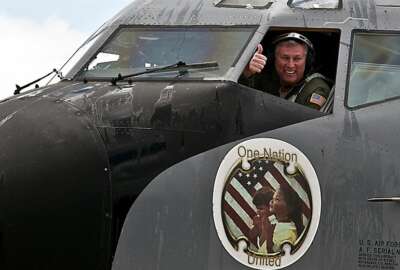

The Air Force is stopping some of the bleeding in its pilot community.
After years of fighting a losing battle in retaining pilots, the Air Force may be veering in a better direction, but there is still much more work to do before the service is in a comfortable position.
This year is the first time in several years that the Air Force ended up with more pilots at the end of the year than at the beginning, according to Air Combat Command leader Gen. James Holmes.
While that’s a positive trend for the service, the shortage still stands at about 2,000 pilots.
“We still have a lot of work to do,” Holmes told reporters Tuesday at the Defense Writers Group in Washington. “One of the things I’ve learned is that there are things that apply to every pilot in our shortage, but also each community in our pilot and operations career fields is a little different and unique. The problems in the A-10 pilot force are not the same as those in the F-16 pilot force.”
To keep pilots in the Air Force, the service plans to tailor some of its solutions to specific issues and communities, instead of only addressing the pilot force at-large.
Holmes said one tailored issue will be how hard the Air Force pushes certain pilot communities.
“In the F-16 community I have three active duty F-16 operational squadrons in the continental United States and I have eight overseas,” Holmes said. “Pilots go there for a year without their families. It’s a tremendous burden on the three squadrons in the United States to train people to fill those eight overseas squadrons. So what can I do to readdress that and take some of the pressure off so they don’t feel like they are on a hamster wheel of training the next maintainer or operator to go to an overseas squadron? Otherwise, they feel they never have a chance really to dig in and achieve the readiness they’d like to.”
By contrast, Holmes said his A-10 squadrons have the best retention. Holmes said he thinks it’s because of the strong sense of community the pilots feel and because they feel they are high performing members who are doing something important and are not in over their heads trying to catch up with requirements.
Holmes said the Air Force will focus on those community specific issues over the next year.
The service already put in place plenty of wide-net incentives to keep pilots. It gave pilots more flexibility in professional development pathways, eliminated non-essential training, cut operational and administrative requirements and raised bonus pay.
The Air Force is also continuing to grow its pilot training pipeline. It will train 1,500 pilots a year by 2022.
It’s also opened up programs that allowed retired pilots to come back to the service.
However, job satisfaction is still hurting retention.
“Job dissatisfaction, career dissatisfaction, frequent and long deployments, poor quality of life, non-competitive pay and lack of personal and professional development are among the reasons cited for why many experienced military pilots separate from military service,” a DoD study on the pilot shortage states.
Pilots aren’t happy in the military and the packages the Air Force has to offer aren’t cutting it.
The study states that major airline hiring increased steadily from 2012 and during that timeframe the number of eligible Air Force pilots who took aviation bonuses decreased from 67% to 44%.
Holmes hopes more community-oriented programs will help increase job satisfaction and retention.
Copyright © 2024 Federal News Network. All rights reserved. This website is not intended for users located within the European Economic Area.
Scott Maucione is a defense reporter for Federal News Network and reports on human capital, workforce and the Defense Department at-large.
Follow @smaucioneWFED


